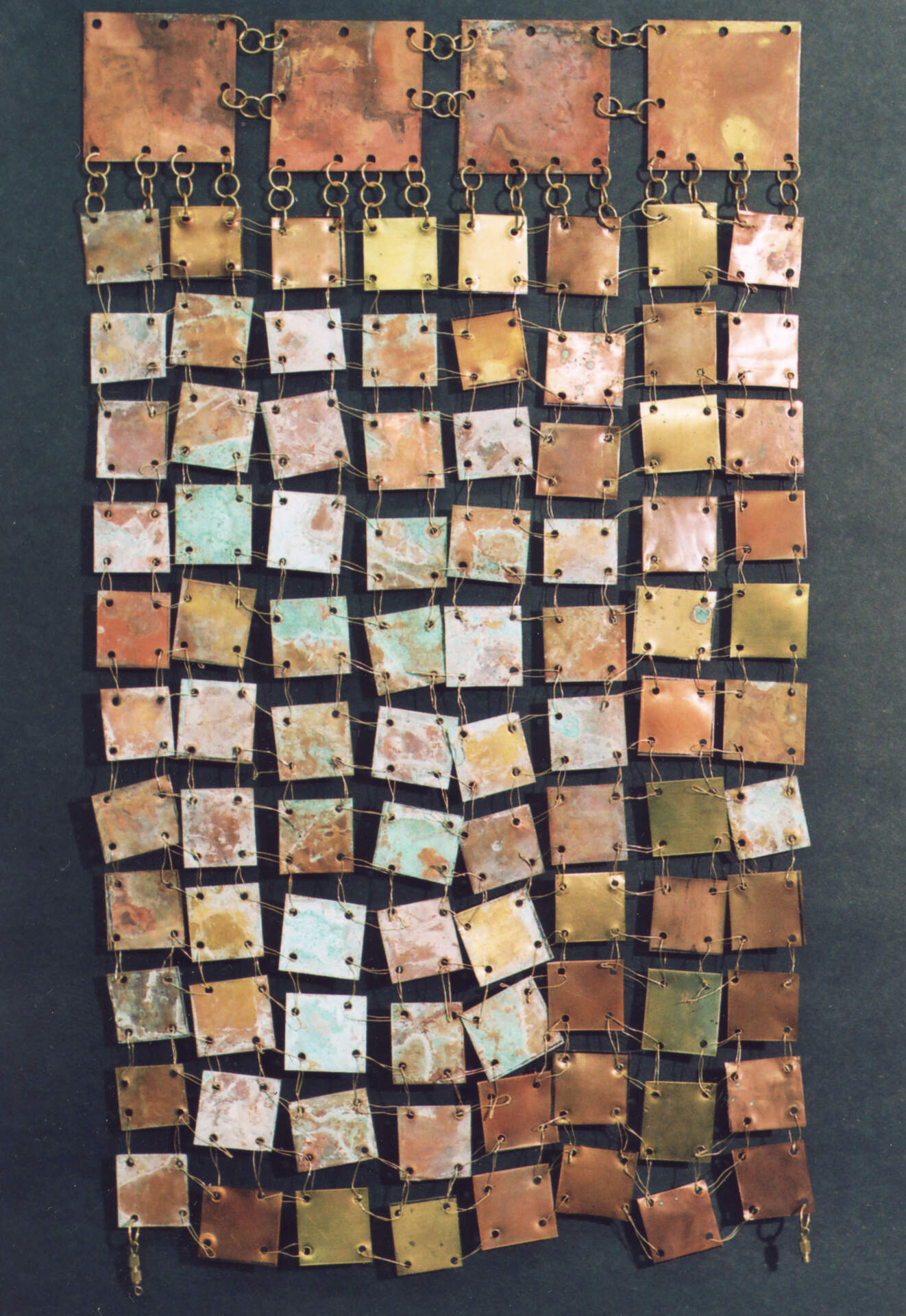
Valeria Cray, Quilts, 2003; acid-washed copper and brass, 18 x 10 inches; Courtesy of the artist
Valeria Cray: Surface Tension
Upcoming
Apr 10, 2026 - Sep 27, 2026
At the heart of Valeria Cray’s practice as a sculptor, public artist, educator, and activist lies her profound belief in art’s power to uplift and connect to the soul. A deeply spiritual woman, her organic, free-form sculptures embody duality and embrace the inherent frictions that define human experience. Valeria Cray: Surface Tension presents sculptures, drawings, and models of public projects spanning the artist’s career of over 50 years.
Principally trained in ceramics and sculpture, her undergraduate studies at the University at Buffalo under artist Duayne Hatchett were a formative introduction to working with and manipulating metal. Early on, she gravitated towards building tension by bending strong, rigid materials like aluminum, copper, and steel into gestural, curved forms. She notes, “The metal allows the sculpture to become more confined in the moment, yet still maintain a soft line with delicate curves. This gives my pieces motion and rhythm with the strength and inner peace of the spirit.”
Cray’s meditative process takes many forms, with concepts evolving from drawings to paper and cardboard models to fully realized small and large-scale sculptures. This extends to her numerous public art projects throughout Buffalo, many fabricated in collaboration with her son and fellow artist, Hiram Cray. Her recognizable public works include the Michigan Street African American Heritage Corridor archway, the Spirit of Life Treein the Buffalo Niagara Medical Campus, the exterior doors to the Frank E. Merriweather Jr. branch library, and most recently, the Unity sculpture at the Tops on Jefferson Ave., created as part of the 5/14 Tops Honor Space. While each design is unique in form and concept, a collective spirit of history and connection intimately embeds these works within their communities.
The innate tension in Cray’s sculptures – between strength and delicacy, rigidity and leniency, stillness and motion – reaches a crucial threshold as each piece ultimately finds balance in its completion. Such a process requires a precise and intentional understanding of materials, cultivated through Cray’s willingness to experiment and learn from failures and successes. Most recently, she’s inverted her process by manipulating and resizing elements from finished sculptures to create paper drawings. As each iteration of her ideas moves from paper to metal and back again, Cray’s work visualizes the many layers of her lived experiences. With no defined ending or beginning, each piece echoes the beauty of life’s progressive movement and cyclical nature.